-
 Bitcoin
Bitcoin $106,782.3966
-0.72% -
 Ethereum
Ethereum $2,406.7764
-1.16% -
 Tether USDt
Tether USDt $1.0005
0.02% -
 XRP
XRP $2.0918
-1.53% -
 BNB
BNB $644.5785
-0.17% -
 Solana
Solana $141.0925
-0.69% -
 USDC
USDC $1.0000
0.02% -
 TRON
TRON $0.2721
0.18% -
 Dogecoin
Dogecoin $0.1585
-1.26% -
 Cardano
Cardano $0.5497
-1.14% -
 Hyperliquid
Hyperliquid $35.8493
-1.58% -
 Bitcoin Cash
Bitcoin Cash $502.3089
2.20% -
 Sui
Sui $2.7092
3.87% -
 Chainlink
Chainlink $12.8551
-1.85% -
 UNUS SED LEO
UNUS SED LEO $9.0548
0.53% -
 Stellar
Stellar $0.2344
-0.85% -
 Avalanche
Avalanche $17.2676
-0.23% -
 Toncoin
Toncoin $2.8282
0.56% -
 Shiba Inu
Shiba Inu $0.0...01113
-1.14% -
 Litecoin
Litecoin $83.9593
-0.93% -
 Hedera
Hedera $0.1447
0.82% -
 Monero
Monero $306.9022
-2.07% -
 Bitget Token
Bitget Token $4.6358
3.42% -
 Dai
Dai $0.9999
0.01% -
 Ethena USDe
Ethena USDe $1.0001
0.02% -
 Polkadot
Polkadot $3.3211
0.06% -
 Uniswap
Uniswap $6.8775
0.75% -
 Pi
Pi $0.5664
-0.27% -
 Aave
Aave $256.0055
1.28% -
 Pepe
Pepe $0.0...09013
-3.24%
Does the appearance of a ground-volume cross star at the end of the decline stop the decline?
The ground-volume cross star, appearing at a downtrend's end with high volume, may signal a potential bullish reversal.
Jun 27, 2025 at 10:35 pm
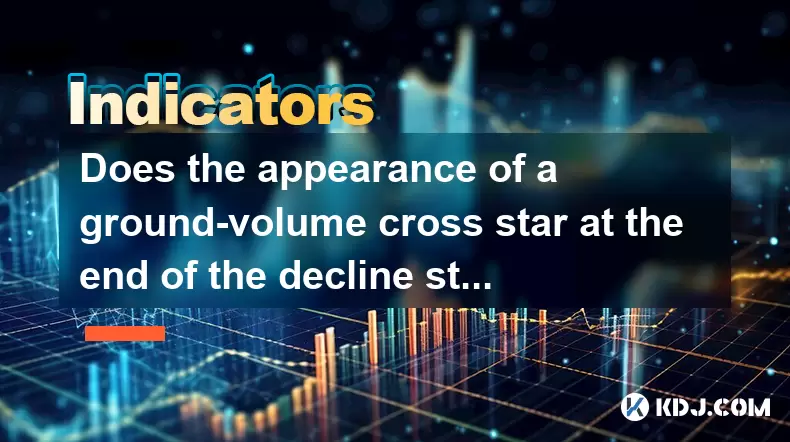
Understanding the Ground-Volume Cross Star Pattern
In technical analysis, candlestick patterns play a crucial role in identifying potential market reversals. One such pattern is the ground-volume cross star. This pattern typically appears at the bottom of a downtrend and is characterized by a small-bodied candle with long upper and lower shadows, accompanied by high trading volume. The presence of this pattern may suggest that selling pressure is diminishing and buyers are starting to enter the market.
The cross star itself indicates indecision between bulls and bears. When it forms at the end of a prolonged decline and is supported by high volume, it often signals a potential shift in momentum. However, interpreting this signal requires careful evaluation of surrounding price action and other indicators.
High volume during the formation of a cross star at the bottom can indicate strong participation from buyers and sellers, which might hint at an imminent reversal.
Technical Implications of the Ground-Volume Cross Star
When analyzing the ground-volume cross star, traders should not rely solely on its appearance to make decisions. It's essential to look at the broader context. For instance, if the price has been falling for an extended period and the cross star emerges with unusually high volume, it could mean that institutional players or large traders are beginning to accumulate positions.
However, the mere presence of a cross star doesn't guarantee a reversal. The next few candles following the pattern must confirm any potential change in trend. A bullish confirmation candle — such as a strong green candle closing above the high of the cross star — would increase the likelihood of a reversal.
- Check for increased volume compared to previous sessions.
- Analyze the length of the shadows — longer shadows imply more volatility around that price level.
- Look for support levels nearby that may have triggered buying interest.
How to Confirm the Reversal Signal
Confirmation is critical when dealing with reversal patterns like the ground-volume cross star. Traders should wait for subsequent price action to validate the potential reversal. This includes observing whether the price moves above the high of the cross star candle or if there’s a surge in bullish momentum.
Using tools like moving averages or RSI (Relative Strength Index) can help filter false signals. If the RSI crosses above 50 after being oversold, it may provide additional confidence in the reversal. Similarly, if the price breaks above a key moving average like the 20-period EMA, it strengthens the case for a trend change.
A breakout above the cross star’s high with continued strong volume is a positive sign that the downtrend may be ending.
Practical Trading Strategy Using the Ground-Volume Cross Star
For traders interested in capitalizing on this pattern, a structured approach is necessary. Here’s how you can build a strategy around the ground-volume cross star:
- Identify a clear downtrend using trendlines or moving averages.
- Spot the cross star candle near a key support level or Fibonacci retracement zone.
- Confirm high volume during the candle’s formation — ideally, it should be significantly higher than the average volume over the past 10–20 periods.
- Wait for a bullish follow-through candle to close above the cross star’s high.
- Set a stop-loss just below the low of the cross star to manage risk.
This strategy helps avoid premature entries based on a single candlestick pattern without confirmation.
Common Pitfalls and How to Avoid Them
Many traders fall into the trap of acting too quickly on a promising-looking pattern without proper validation. One of the most common mistakes is entering a trade immediately after seeing a cross star without waiting for confirmation. Another issue is failing to assess the overall market environment — even a perfect pattern can fail if the broader market is bearish.
Additionally, some traders ignore volume entirely, which diminishes the effectiveness of the ground-volume cross star as a signal. Volume acts as a supporting factor that increases the probability of a successful trade.
Avoid trading the cross star in isolation; always combine it with volume analysis and trend confirmation techniques.
Frequently Asked Questions
What is the difference between a cross star and a doji?
While both the cross star and the doji have small bodies and long shadows, the main difference lies in their positioning within a trend and the accompanying volume. A doji typically represents neutrality and can appear anywhere in a chart, while a cross star at the bottom with high volume specifically suggests a potential reversal point supported by strong market participation.
Can the ground-volume cross star appear in cryptocurrencies like Bitcoin or Ethereum?
Yes, the pattern is equally applicable to cryptocurrencies. In fact, due to the volatile nature of crypto markets, patterns like the ground-volume cross star tend to appear more frequently and can offer valuable insights when analyzed alongside volume data.
Is it reliable to use this pattern in intraday trading?
The reliability of the pattern depends on the time frame. While it can occur in intraday charts, it’s generally more reliable on higher time frames like the 4-hour or daily charts. On shorter time frames, the noise and erratic price movements in crypto markets may produce misleading signals.
How does the ground-volume cross star compare to other reversal patterns like the hammer or engulfing pattern?
The hammer and bullish engulfing patterns are also reversal signals, but they differ in structure and interpretation. A hammer has a long lower shadow and a small upper body, indicating rejection of lower prices. An engulfing pattern shows a strong reversal through a larger candle completely engulfing the prior one. The ground-volume cross star focuses more on indecision backed by high volume, making it unique in its own right.
Disclaimer:info@kdj.com
The information provided is not trading advice. kdj.com does not assume any responsibility for any investments made based on the information provided in this article. Cryptocurrencies are highly volatile and it is highly recommended that you invest with caution after thorough research!
If you believe that the content used on this website infringes your copyright, please contact us immediately (info@kdj.com) and we will delete it promptly.
- Sonic, Magic Gathering, and July 2025: What's Trending?
- 2025-06-28 02:30:12
- Bitcoin Whale Inflows Nosedive: Are Investors Eyeing a New All-Time High?
- 2025-06-28 02:30:12
- Smart Investors Eye Audited Token RUVI for Rally Prediction
- 2025-06-28 02:35:12
- Neo Pepe, XRP & Cardano: A Memecoin Summer Showdown?
- 2025-06-28 02:55:12
- Qubetics, Cosmos, Cardano: Decoding Today's Crypto Buzz
- 2025-06-28 02:55:12
- Snap Inc.'s AR Momentum: Stock Surge Fueled by Teen Engagement
- 2025-06-28 02:57:07
Related knowledge
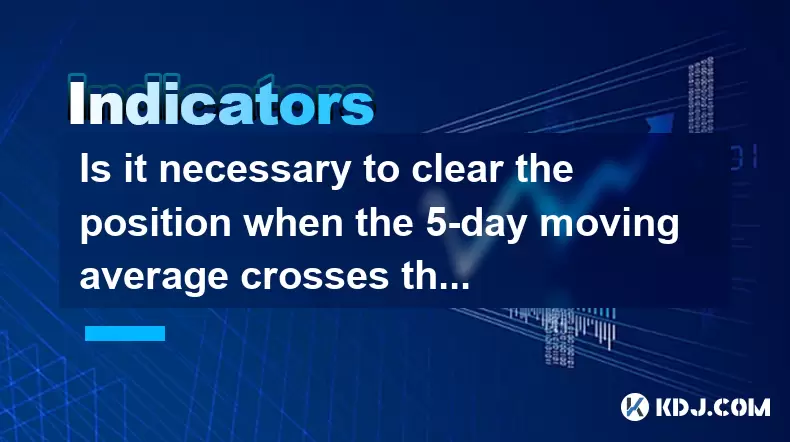
Is it necessary to clear the position when the 5-day moving average crosses the 10-day moving average?
Jun 27,2025 at 07:21pm
Understanding the 5-Day and 10-Day Moving AveragesIn the realm of technical analysis within the cryptocurrency market, moving averages play a crucial role in identifying trends and potential reversal points. The 5-day moving average (MA) and 10-day moving average are two of the most commonly used short-term indicators by traders. These tools smooth out ...
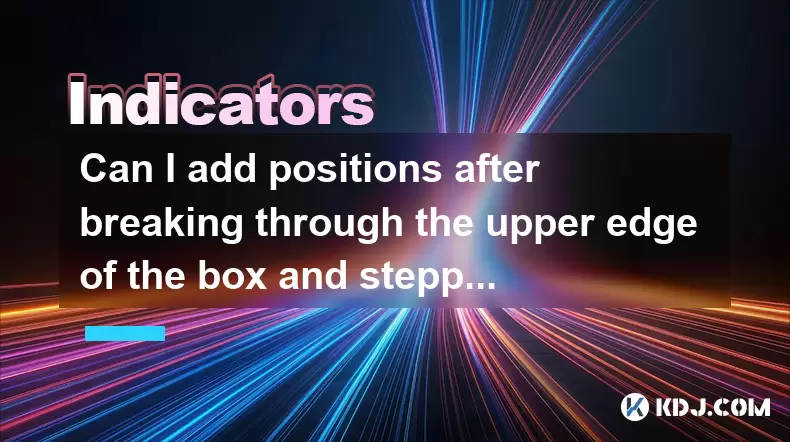
Can I add positions after breaking through the upper edge of the box and stepping back without breaking?
Jun 27,2025 at 09:56pm
Understanding the Box Breakout StrategyIn cryptocurrency trading, box breakout strategies are commonly used by technical analysts to identify potential price movements. A box, or a trading range, refers to a period where the price of an asset moves within two horizontal levels — the support (lower boundary) and resistance (upper boundary). When the pric...
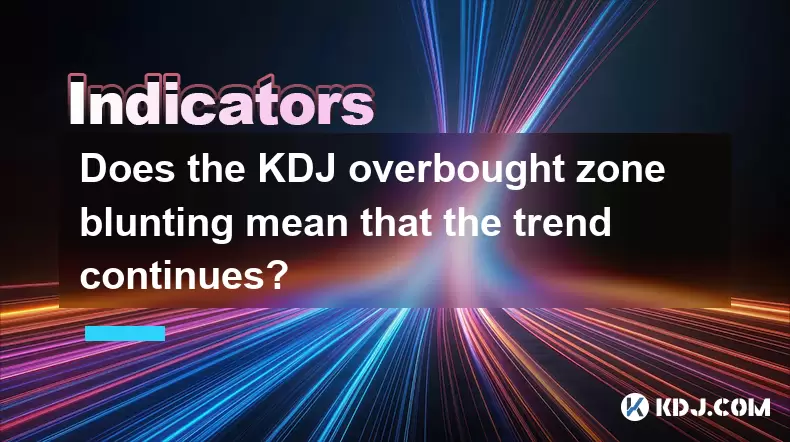
Does the KDJ overbought zone blunting mean that the trend continues?
Jun 27,2025 at 03:35pm
Understanding the KDJ Indicator in Cryptocurrency TradingThe KDJ indicator, also known as the stochastic oscillator, is a popular technical analysis tool used by traders to identify overbought or oversold conditions in asset prices. In the cryptocurrency market, where volatility is high and trends can change rapidly, understanding how to interpret the K...

Does the appearance of a ground-volume cross star at the end of the decline stop the decline?
Jun 27,2025 at 10:35pm
Understanding the Ground-Volume Cross Star PatternIn technical analysis, candlestick patterns play a crucial role in identifying potential market reversals. One such pattern is the ground-volume cross star. This pattern typically appears at the bottom of a downtrend and is characterized by a small-bodied candle with long upper and lower shadows, accompa...
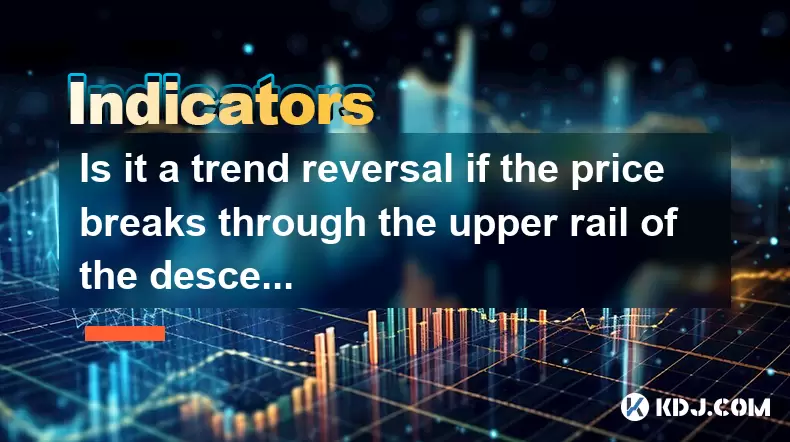
Is it a trend reversal if the price breaks through the upper rail of the descending channel and then steps back without breaking?
Jun 27,2025 at 05:35pm
Understanding the Descending Channel PatternA descending channel is a technical analysis pattern formed by two parallel downward-sloping trendlines, one acting as resistance and the other as support. This pattern typically indicates a continuation of a downtrend, where price action oscillates between these two boundaries. Traders often look for breakout...
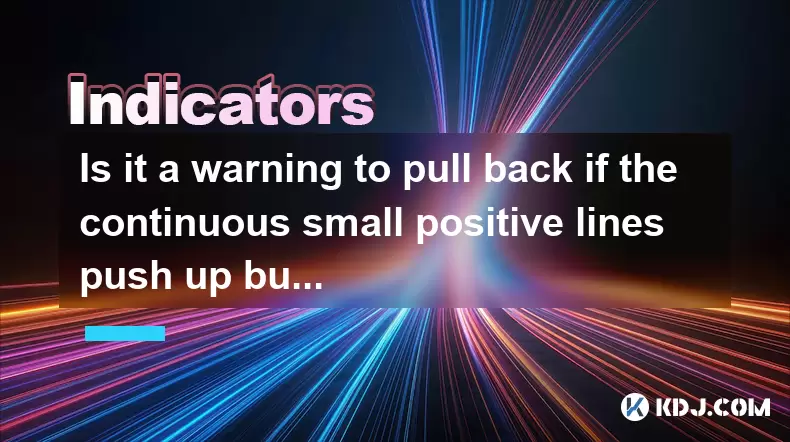
Is it a warning to pull back if the continuous small positive lines push up but the volume is insufficient?
Jun 27,2025 at 05:28pm
Understanding the Pattern: Continuous Small Positive LinesIn technical analysis, continuous small positive lines refer to a series of candlesticks where each candle closes slightly higher than its open. These candles usually have short wicks and indicate a gradual upward movement in price. Traders often interpret this pattern as a sign of steady buying ...

Is it necessary to clear the position when the 5-day moving average crosses the 10-day moving average?
Jun 27,2025 at 07:21pm
Understanding the 5-Day and 10-Day Moving AveragesIn the realm of technical analysis within the cryptocurrency market, moving averages play a crucial role in identifying trends and potential reversal points. The 5-day moving average (MA) and 10-day moving average are two of the most commonly used short-term indicators by traders. These tools smooth out ...

Can I add positions after breaking through the upper edge of the box and stepping back without breaking?
Jun 27,2025 at 09:56pm
Understanding the Box Breakout StrategyIn cryptocurrency trading, box breakout strategies are commonly used by technical analysts to identify potential price movements. A box, or a trading range, refers to a period where the price of an asset moves within two horizontal levels — the support (lower boundary) and resistance (upper boundary). When the pric...

Does the KDJ overbought zone blunting mean that the trend continues?
Jun 27,2025 at 03:35pm
Understanding the KDJ Indicator in Cryptocurrency TradingThe KDJ indicator, also known as the stochastic oscillator, is a popular technical analysis tool used by traders to identify overbought or oversold conditions in asset prices. In the cryptocurrency market, where volatility is high and trends can change rapidly, understanding how to interpret the K...

Does the appearance of a ground-volume cross star at the end of the decline stop the decline?
Jun 27,2025 at 10:35pm
Understanding the Ground-Volume Cross Star PatternIn technical analysis, candlestick patterns play a crucial role in identifying potential market reversals. One such pattern is the ground-volume cross star. This pattern typically appears at the bottom of a downtrend and is characterized by a small-bodied candle with long upper and lower shadows, accompa...

Is it a trend reversal if the price breaks through the upper rail of the descending channel and then steps back without breaking?
Jun 27,2025 at 05:35pm
Understanding the Descending Channel PatternA descending channel is a technical analysis pattern formed by two parallel downward-sloping trendlines, one acting as resistance and the other as support. This pattern typically indicates a continuation of a downtrend, where price action oscillates between these two boundaries. Traders often look for breakout...

Is it a warning to pull back if the continuous small positive lines push up but the volume is insufficient?
Jun 27,2025 at 05:28pm
Understanding the Pattern: Continuous Small Positive LinesIn technical analysis, continuous small positive lines refer to a series of candlesticks where each candle closes slightly higher than its open. These candles usually have short wicks and indicate a gradual upward movement in price. Traders often interpret this pattern as a sign of steady buying ...
See all articles























































































